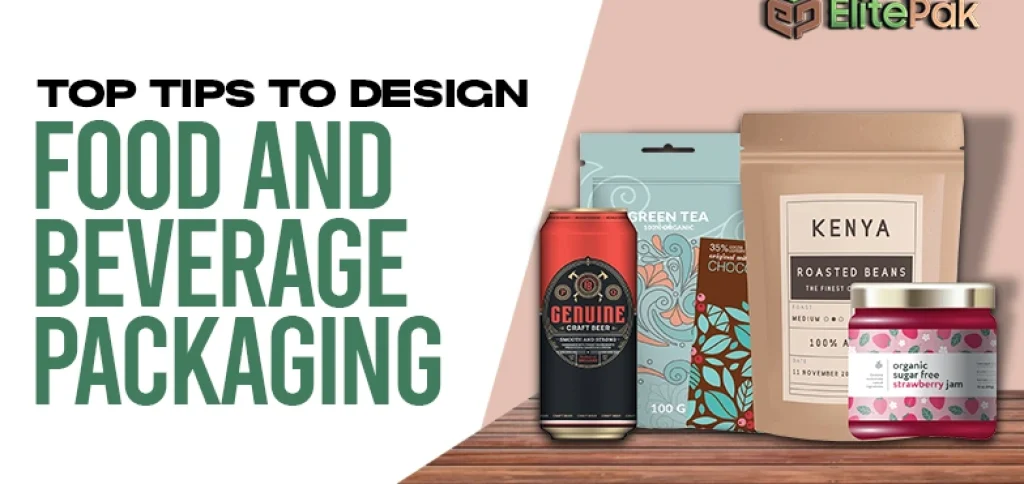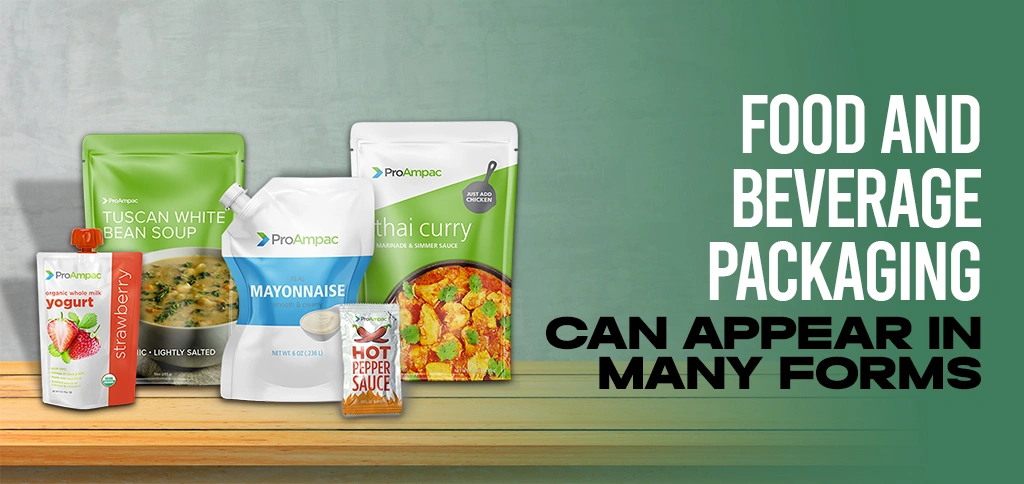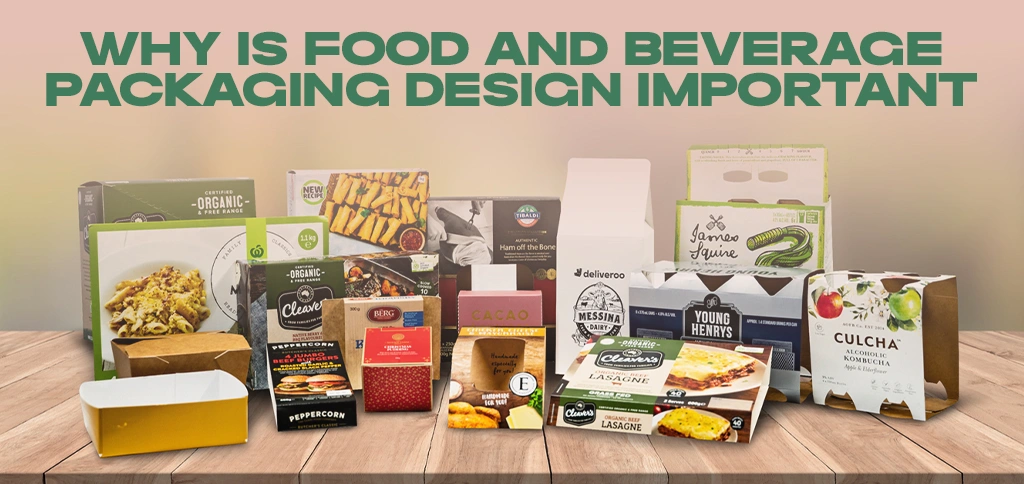
Food and beverage packaging is important for every business. Packaging provides protection for most delicate products. These packaging are made with high-quality material that is durable and versatile. It ensures that your products are secure and your customers are satisfied. Packaging is most important for the food and beverage industry. Packaging is the main interface between you and your customer. Their main aim is to safely transfer their product to the customers. Custom food and beverage packaging can increase your branding, marketing, and purchasing decisions.
Food and Beverage Packaging Can Appear in Many Forms, such as:

|
Glass Bottles |
|
| Metal Cans |
|
| Plastic Containers |
|
| Boxes |
|
| Bags |
|
| Jars |
|
| Pouches |
|
| Cartons |
|
| Cans |
|
Why is Food and Beverage Packaging Design Important?

Food and beverage packaging has several purposes, such as protecting your delicate food products and marketing your lavish pre-packed product to the masses. If your packaging fails to protect your brand products, customers will immediately leave your products and choose competitors. So, design is important for effective food and beverage packaging.
When you bring a new product to the market, choose the best packaging design according to your products. Studies indicate that attractive packaging design can actively positively impact the brain with rewards. But, some designs can have a negative impact when it comes to bad packaging. If you want the customer to pick your product over many competitors, just choose a creative packaging design.
Tips To Design Food And Beverage Packaging
Here are some top tips for designing food and beverage packaging:
Create A Brand Identity
It is a top tip for designing food and beverage packaging for your businesses. Creative packaging design that supports your brand identity.
For example:
High-end food like expensive chocolate and sushi are packed in plastic boxes, which may spoil its luxury look. Its luxury look is enhanced if packed in a satin veneer box container and wrapped with fancy ribbons.
Brand identity is the most important thing for every business, as it conveys your value to the customers. Brand identity connects them in a way that makes them invest in your products, whether you are selling expensive chocolate or orange juice.
Here are some main aims for developing a brand identity for your products
- Analyze the company and your market.
- Establish key goals.
- Identify customers.
- Create a personality for the product.
This process will require you to analyze your business and develop key goals. Also, find your consumer markets and make the best quality products. After finishing this work, create a marketing campaign and strategies.
Use Elements Of Construction
Construction of packaging design should fall under three simple rules:
- Form
- Function
- Beauty
Packaging’s main function is to protect the content by keeping it in the size and shape of products. Add some aesthetic design that attracts the consumer’s attention. Many food packaging designs illustrate this idea of combining form, function, and beauty. Food packaging designers make strong and durable designs that are beautiful. This design ensures that the product arrives at the store safely without any damage.
Packaging materials
When designing food packaging, it is most important to consider the materials used in packaging. Choose sustainable, cost-effective, and durable materials that protect the products from heat and chemical resistance. Packaging also protects the glass containers such as beer, pickles jars, cold drinks bottles, etc. Biodegradable, sustainable, and environmentally friendly packaging is the most popular these days.
Packaging Complements To The Contents
Food content is the biggest factor in determining the food and beverage packaging material. Some products have more preservatives and longer shelf life, some food spoils quickly, some need refrigerators, and some need sealed packaging that is made from aluminum. Product safety is not the only concern. The content should also match the packaging design.
Firstly, check the product content and then design the perfect packaging. For example, chips and cookies are not packed in containers because they are easily smashed. Aluminum foil is important to protect them from heat and cold temperatures. Normal water packaging does not need cans because water is not carbonated, and they do not have ingredients that need to be stored in aluminum. So, the designer needs to check the content and ingredients of the product and then design the packaging.
Consider Shelf Impact
This term is important to describe the packaging look. The term shelf impact describes how your product will look while placed on the store’s shelves. Your product is surrounded by many competitors, so you need to carefully consider why customers choose your product over another. After checking the content list, shelf impact is a second priority when designing your product packaging. You need a clear reason why our product is right for the customer demand. Aesthetic colours or refreshing classic or simple designs attract customer attention. Take your time and explore what makes your packaging the most appealing option for the customer.
Be Creative To Avoid Printing And Production Costs
During packaging designing, avoid all these mainly expensive printing. Just develop a creative and aesthetic design that attracts the customers’ attention. This is the best cost-effective way to design product packaging. Decent looks are more attractive than printed designs on the packaging. Manufacture the packaging within your budget that inexpensively presents an aesthetically appealing product to the public.
Play With Patterns And Colour
A simple and elegant look is always good and cost-effective for packaging design. But do not be afraid to use patterns and bright colours. Brand loyalty occurs after consumers are familiar with the brand. If you want to attract customer’s attention to your brand, just play around with bright or light colours and make creative patterns.
Some colour patterns:
| Blue Colour | Known to be calming and associated with trust and efficiency. |
| Red Colour | Aggressive, filled with passion and excitement. |
| Green Colour | Associated with nature, soothing, and eco-friendly. |
| Yellow Colour | It is a symbol of happiness, emotion, cheerfulness, and energy. |
| Black Colour | Indicates luxury, elegance, and a premium brand |
Choosing the colour of your product packaging can be equally important as choosing the right ingredient.

